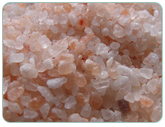Icemelters: What you should know
- The pros and cons of basic icmelting compositions

During the 1980’s, there took place a great shift in society’s collective perception of the importance and urgency
surrounding environmental issues. That, combined with the consumer’s growing demand for the best performance at the best price, meant that rapid change took place in every facet of the manufacturing industry.
The icemelt industry was no exception. A multitude of new products appeared on the market and many more are added each year. And while that meant that there was more choice for the consumer, it also meant that the decision became more difficult. Not all icemelters are created equal. Complicating matters, many brands’ claims are confusing and misleading. More often than not, new icemelters are simply blends of traditional, more common icemelters, sometimes with additives.
Products containing dangerous chemicals pollute waterways, inevitably entering and polluting drinking water supplies. They harm aquatic life and animals that feed on aquatic life, and they harm plant life – damaging the soil structure as well as the foliage itself. They also damage concrete, and once tracked indoors, damage flooring; maintenance costs can be astronomical. XYNYTH Manufacturing Corp. believes in the power of choice – and that if the consumer is given the information they need, they’ll make the right choice.
With so much information now about the impact, both positive and negative, we can have on the planet, it’s important to make the environmentally-safer choice. It’s also important to make a choice that won’t be as harmful to your pocketbook as it is to the environment.
It is important to know the composition of the ice melter being used. The overall characteristics of that icemelter are determined by the specific qualities, both good and bad, of the major components comprising the make-up of that icemelter. It is important therefore, to understand the specific qualities or attributes, (pros & cons) of the basic components that go into the make-up of most icemelters on the market today.
Listed here below, are those basic elements that are used to produce icemelters in the market today along with each component’s pros and cons.
Rock Salt (also known as Sodium Chloride)
- Readily available almost everywhere
- Least expensive product on the market
- Toxic to plant life
- Harmful to soil structure; reduces soil’s permeability to air and water
- Damaging to waterway ecosystems; increases salt content to dangerous levels
- Highly corrosive; the most corrosive icemelting agent on the market today
- Leaves behind a white residue that tracks into buildings and damages flooring
- Attracts moisture, which causes product clumping making it difficult to spread
- A skin and eye irritant; special user equipment required
Calcium Chloride
- Readily available
- Works to a low temperature
- Promotes a short freeze/thaw cycle which causes damage to concrete
- Increased maintenance costs; discolours concrete
- Leaves behind an oily residue that tracks into buildings and damages flooring
- Calcium Chloride’s dust is caustic and burns skin; gloves and a mask are required
- Dangerous to use around children and pets
- Has a very limited shelf life; absorbs moisture from the air and turns rock solid
- Toxic to plants
- Works on the principle of heat – stops working once the heat is gone. Re-freezing occurs faster.
Magnesium Chloride (also known as MAG)
- Works to a low temperature
- Does not damage vegetation
- Independent research reveals that Magnesium Chloride chemically attacks concrete
- Requires frequent application so it’s expensive to use
- Chemical qualities are hazardous to eyes and skin; gloves and goggles are recommended.
- Oily residue stains and damages flooring, significantly increasing maintenance costs
- Turns into a slimy liquid when it comes into contact with moisture; difficult to store, expensive to replace
Urea
- A common component in fertilizer
- Will not damage concrete, less corrosive in its pure form
- Among one of the more expensive icemelters on the market
- Study by Iowa State University shows urea delays color development in turf grass and plants
- Plants and grass are sensitive to sudden surges of undiluted urea which can occur after winter build up followed by spring thaws
- Fertilization of forests with urea-nitrogen has been studied for its effect on water quality -- causes late flowering, irregular leaf formation, and acceleration of algal bloom (causing the condition known as RED TIDE)
- Urea contains nitrogen which breaks down to ammonia when placed into the environment. This is toxic to aquatic life, even at low levels.
- Multiple health hazards: irritation with inhalation, eye and skin irritation, and vomiting/nervous system depression with ingestion
- Doesn’t melt to low enough temperatures to be practical for use.
Liquid De-icers
- Great for “pickling” sand piles so that the moisture in the
sand does cause the pile to freeze
- Provides no traction
- Tracks into buildings significantly increasing maintenance costs
- While pre-application is suggested as a way to prevent ice-buildup, no testing has proven this is even slightly effective – it’s only expensive
- Liquid is absorbed by the surface leaving little behind to actually fight ice build-up
- Equipment set-up costs for liquid application are high
- Protective clothing is essential to prevent liquid spill on users
- Can be dangerous for use around children, pets and plants.
Potassium Chloride (also known as Potash)
- Safe for the environment
- Safe for use around children and pets.
- Will not damage concrete
- Is actually a required nutrient to plant life
- Over time, will repair soil damaged by excessive use of rock salt
- Effective to –5ºC (+17º F) in its pure format
- Has the potential to burn plants if applied in a concentrated amount
- Frequently blended with sodium chloride (rock salt)
Back to top >>
